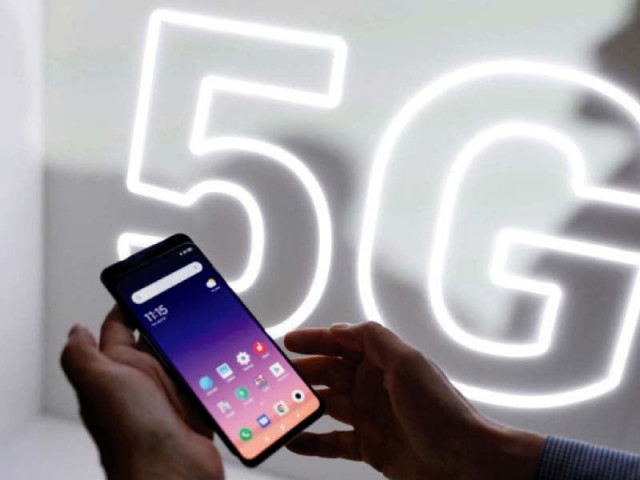5G: let’s at least start preparing
As 85 countries have adopted 5G, we will also have to implement technology

Agreed, these are times of enormous financial crisis. It is when many private-sector enterprises are struggling to stay afloat, including telcos, whose financial health is forcing at least one to leave the country.
They earn revenues in rupees, but even their government dues are linked with US dollars.
In such times, any talk of implementing new technologies, like 5G, may seem out of place. But 220 active 5G operations in 85 countries mean we will also have to implement 5G sooner or later.
5G differs from the earlier generations of mobile networks, which were used to call others or access the internet. 5G is the first mobile technology built to do more. It takes human hands off the devices and makes the connections invisible to those benefiting, making human lives easier and more productive.
With faster internet speed, increased data-carrying capacity, and much lower latency (the time it takes for your given input to make the round-trip and return with the result), 5G can change the way things work.
For instance, 5G revolutionises the manufacturing process by shrinking the latency. The 2G connections had about one-second latency; ie, it took nearly a second for a command to return with the information. Now, if a factory wants to detect a defective product whizzing by on an assembly line and flick it into the trash bin, even a quarter of a second is too long. 5G can easily handle those speeds.
5G also generates new opportunities for software developers to develop generic 5G-related software solutions because the future of 5G will be based on open-system architectures. This has come about due to a peculiar set of circumstances.
It started with the Chinese getting an edge in 5G over the West. To defeat the Chinese telecom suppliers of 5G gear, the West is employing new approaches based on open (as against proprietary) interfaces like SDN (Software Defined Network), etc.
A former executive of Lucent and British Telecom, Jonathan Pelson, elaborates in his book “Wireless Wars” how the billions of dollars of specialised equipment made by Huawei and others is to be replaced with off-the-shelf general-purpose servers from Dell, HP, Fujitsu, etc.
Consequently, small software developers will also provide the required open-system software solutions for parts of 5G networks. This will open opportunities for Pakistani youth too.
What do we do in Pakistan?
The state cannot – and should not – own and run public telecom networks, which has to be done by the private-sector players. But for them, the significant investments required by 5G will only be feasible when their outstanding issues are resolved, and the right incentives are given.
Currently, heavy taxation, little allocated spectrum, low fibre penetration, one of the lowest average revenues in the world, and inadequate proliferation of the previous generation 4G – all go against.
Therefore, the strategy should utilise these challenging times to prepare for 5G by enabling and facilitating the private sector, enhancing 4G, and gradually shifting gears to 5G.
It is the market that will decide the best timing for 5G, but we must start taking at least the following steps from now onwards:
Optic fibre cables
5G relies heavily on connecting cellphone towers with optic fibres, whereas hardly 10-15% of towers are associated with fibres in Pakistan.
Therefore, the optic fibre providers (of infrastructure as well as of service) should be facilitated by rationalising customs tariffs on optic fibres and related equipment, plus by helping them get the right of way (RoW) from various rent-seeking organisations who own the RoW.
Spectrum
5G needs several times more spectrum than 4G. This is a big deal for a country where the government has released less spectrum than almost all comparable countries.
Releasing spectrum is like opening new highway lanes. The lanes already exist in the air but are not used. The unused spectrum is a loss to the economy.
Whenever the spectrum was offered to the private sector in Pakistan, its price was always kept very high. On top of it, the price was pegged to the US dollar.
And due to the unceasing depreciation of the Pak rupee, the spectrum price in rupee keeps climbing up. Even the instalment payments for the spectrum bought in the previous years keep shooting up. That has to be halted first.
Then, the government must make available large blocks of technology-neutral spectrum on easy terms, keeping the auction floor prices low and not pegged to the USD.
Because of the current situation, a couple of years’ grace period for payments should be allowed. Without any direct cost to the government, this will enable the telcos to improve 4G service – stimulating new investments and moving the sector towards 5G.
Financial health of telcos
Telcos should also take some “tough” (read risky) decisions. Increasing the consumer tariffs would be absolutely justifiable, considering that all their inputs now cost several times more. Also, PTA and FAB should tighten their belts and reduce the regulatory fees.
Use cases
To help with local-use cases, the telcos should create 5G trial hotspots at universities, research organisations, industries, incubation centres, etc.
The government should help by partially funding the 5G trials (through Ignite?). Localuse cases will take time to evolve, but only if 5G is available to play with.
Why not continue doing nothing?
We do have the option to continue doing nothing – just like we did before introducing 3G in Pakistan. Later, we saw that after 3G/4G, new businesses emerged, creating jobs for our mushrooming population.
Ride-sharing, food delivery, e-commerce, small businesses based on Facebook/ Instagram, global freelancing, tech startups, YouTubing, etc, all emerged after 3G and 4G became available.
But we lost six precious years. In more mature economies, studies assess the impact of timely adoption, like the study by LeCG UK in January 2009. Unfortunately, we do not have such traditions.
In conclusion, we may wait a few months more, but during this waiting time, we must start preparing for the 5G launch – perhaps after 12 months?
The writer is the former CEO of Universal Service Fund and is providing telecom (policy and regulation) consultancy services in several countries in Africa and Asia
Published in The Express Tribune, February 13th, 2023.
Like Business on Facebook, follow @TribuneBiz on Twitter to stay informed and join in the conversation.



















COMMENTS
Comments are moderated and generally will be posted if they are on-topic and not abusive.
For more information, please see our Comments FAQ